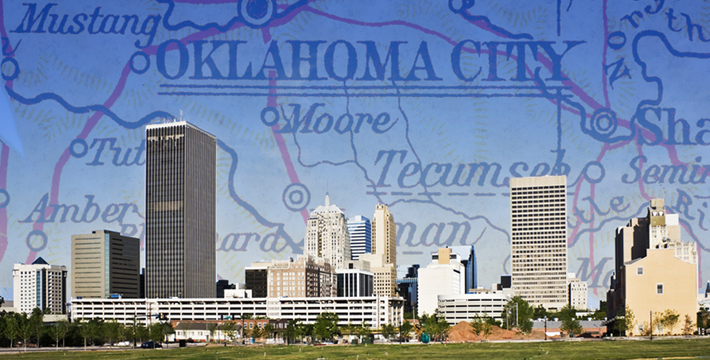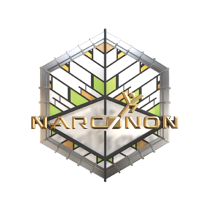What Drugs are Sending Oklahomans to Rehab?
Drug abuse patterns are constantly shifting. One drug stops being available in an area and another one takes its place. Law enforcement pushes one drug distribution group out of business and a different one, dealing in a different drug, takes its place. Knowing what drugs are sending the most people to rehab helps families know what drugs to watch for.
In Oklahoma, alcohol used to be the top drug sending people to rehab by a wide margin. Now, it’s barely in the number one spot. Due to alcohol abuse alone, only 2,145 people sought help from Oklahoma rehabs in 2014. About the same number said they were struggling with alcohol and another drug together. The total of both groups is 4,370.

It’s probably not surprising that the drug is second place is amphetamines – in Oklahoma, that’s mostly methamphetamine. In college towns, prescription stimulants Adderall or Ritalin might boost the numbers slightly.
The percentage of people going to rehab for stimulants now is roughly the same as it was in 2002. The numbers dipped some in 2008, after precursor chemicals for methamphetamine became harder to get. But once Mexican meth labs ramped up their production and more of the drug began to be trafficked into the state, the numbers climbed again.
Admissions to rehab for marijuana have been hovering around 20% of the total number for several years, reaching 2,677 in 2014. Heroin admissions are low but prescription opioid admissions are inching up year by year.
How Many People Need Treatment Each Year?
In addition to monitoring those going to rehab, the Substance Abuse and Mental Health Services Administration (SAMHSA) also collects information on how many need rehab. In 2014, they estimated that 64,000 Oklahomans needed help for illicit drug use and 183,000 Oklahomans needed help for alcohol abuse. Since only 13,851 arrived at publicly-funded rehabs in 2014, it’s apparent that many people who need help are not getting it. (SAMHSA does not track how many people arrived at privately-funded rehabs but most rehab programs by far receive some public funding.)
How to Identify Problems with These Drugs
Alcohol: If you care about someone who regularly drinks, watch for these signs that his or her drinking is out of control:
- Social events will be planned around the ability to drink or get drunk.
- The individual misses work or school assignments or church or family activities because of the effects of alcohol.
- The person drinks irresponsibly, for example, when he will be driving or working later, or when he or she should be home or caring for children.
- She suffers memory losses or blackouts repeatedly.
- He or she has been hurt or has hurt someone else after drinking.
When events like these become a regular pattern in the person’s life, it’s time for them to get help. If he refuses, then you could be saving his life or the life of another person in his vicinity if you intervene to get him to rehab.
Stimulants: Stimulants have a completely different effect on a person’s body and mind. Watch for these signs of stimulant abuse:
- A person does not eat or sleep normally – he skips meals and stays up for long hours. On a methamphetamine binge, a person may stay up for several days before he crashes.
- Someone using stimulants normally loses an unusual amount of weight.
- Because of the effects of stimulants on the mind and the physical stress, a person can become paranoid and may hallucinate.
- They may seem unusually focused and excited and their eyes may be dilated.
- A person using stimulants is not only at risk for addiction but may also trigger a physical and mental crash because of the strain on body.
Opioids: Each year in Oklahoma, an estimated 156,000 people are abusing opioids, which means they are taking them in a different way than prescribed or they are taking them to get high. As most people know, it is easy to overdose on these drugs, especially if a person is just starting to abuse them or they have been off them for a while. Chemically, heroin is about the same as painkillers, so the symptoms of a problem with heroin will be very similar.
Physical signs a person is abusing painkillers or heroin:
- Both make a person sleepy and groggy. He may nod off suddenly.
- He will not be able to focus or concentrate.
- His breathing will be slow.
- She may get itchy, may scratch her nose or her body.
- Opioids cause nausea and a user may vomit.
Behavioral signs of addiction to opioids:
- Money and valuables will normally go missing.
- Their usual activities, goals and old groups of friends will be abandoned.
- They will be jittery and secretive.
- Their appearance and grooming will deteriorate.
- They may suffer mysterious infections or illnesses.
- They may begin to be arrested for thefts or other crimes as they try to obtain the money for more drugs.
A person using opioids is putting himself at risk with every single dose. Intervening could very easily save his life.
Marijuana: Thirty percent of those going to rehab for marijuana addiction are 20 years old and younger – marijuana has a much younger profile of use than any other drug. When a person begins using this drug as an adult, one in eleven will become addicted. When they begin using it as a teen, one is six will become addicted.
Behavioral signs of marijuana use and addiction:
- A person begins to isolate from his family and changes his group of friends.
- Study or work performance will usually deteriorate.
- The marijuana user may be confused and unable to focus his attention on anything for more than a few minutes.
- He will abandon projects, hobbies and goals.
- He will be less able to correctly judge time and distance, which could show up as an inability to complete simple tasks or as having traffic accidents.
- She will be less coordinated so she may give up sports activities.
- If the marijuana used is very potent, the person may experience delusions, panic attacks, hallucinations or even psychotic breaks.
- With heavy use of marijuana, the risk of suicide is increased. Here too, you could be saving someone’s life by intervening in their drug abuse.
Helping a Person Choose Rehabilitation
Some people do ask for help when they realize they have damaged their lives with their drug use but sadly, most do not. When the family sees the harm and realizes that it’s caused by addiction, the best thing they can do is intervene and get the person into a rehabilitation program that will help their loved one regain the brightness and ability they lost. At Narconon Arrowhead, we help those who are addicted regain the sparkle they had before drugs stole it away. We can help you get back the person drugs took away from you.
If you need help getting your loved one to decide on sobriety, we can help. We work with some of the most successful intervention services in the state and we know just who to call. Let us know what your situation is. Call us today and let us explain how our program repairs the damage created by addiction and returns the individual to an ability to create and enjoy a sober life. Call 1-800-468-6933 today.
http://www.samhsa.gov/data/sites/default/files/1/1/NSDUHsaeOklahoma2014.pdf
http://www.samhsa.gov/data/sites/default/files/2002-2012_TEDS_State/2002_2012_Treatment_Episode_Data_Set_State.pdf
http://www.samhsa.gov/data/sites/default/files/2014_TEDS_Substance_Abuse_Treatment_Admissions_Tables_as_of_2015_Q4.html#OK14
http://www.dea.gov/docs/dangers-consequences-marijuana-abuse.pdf


